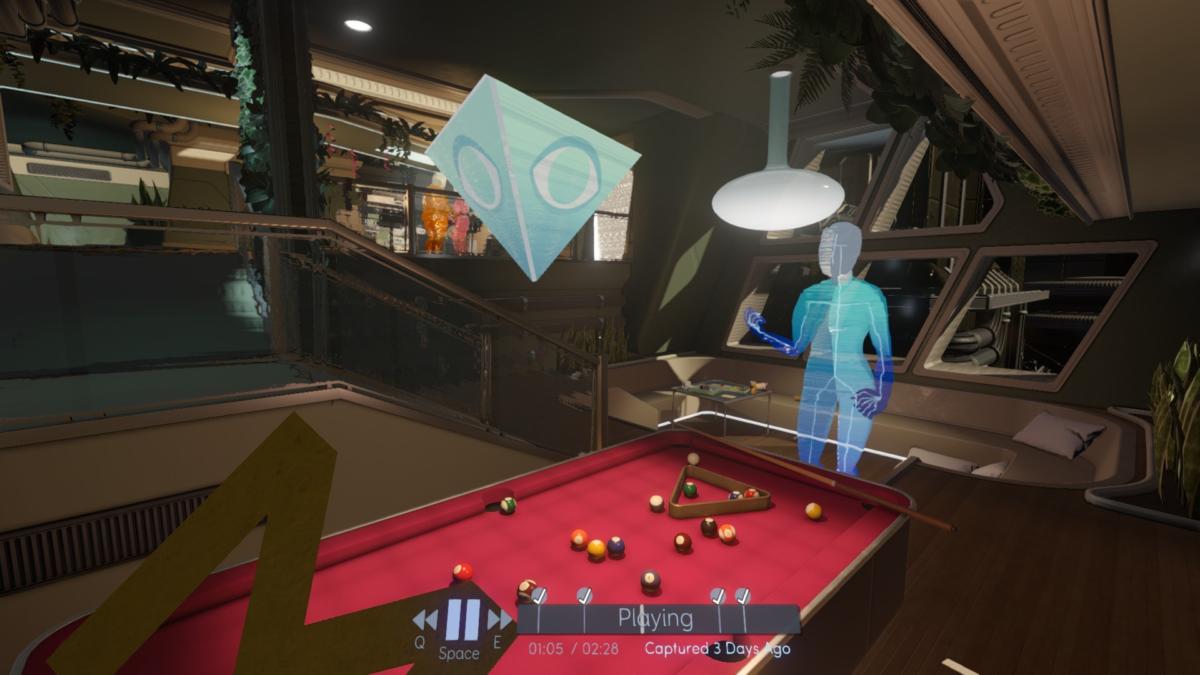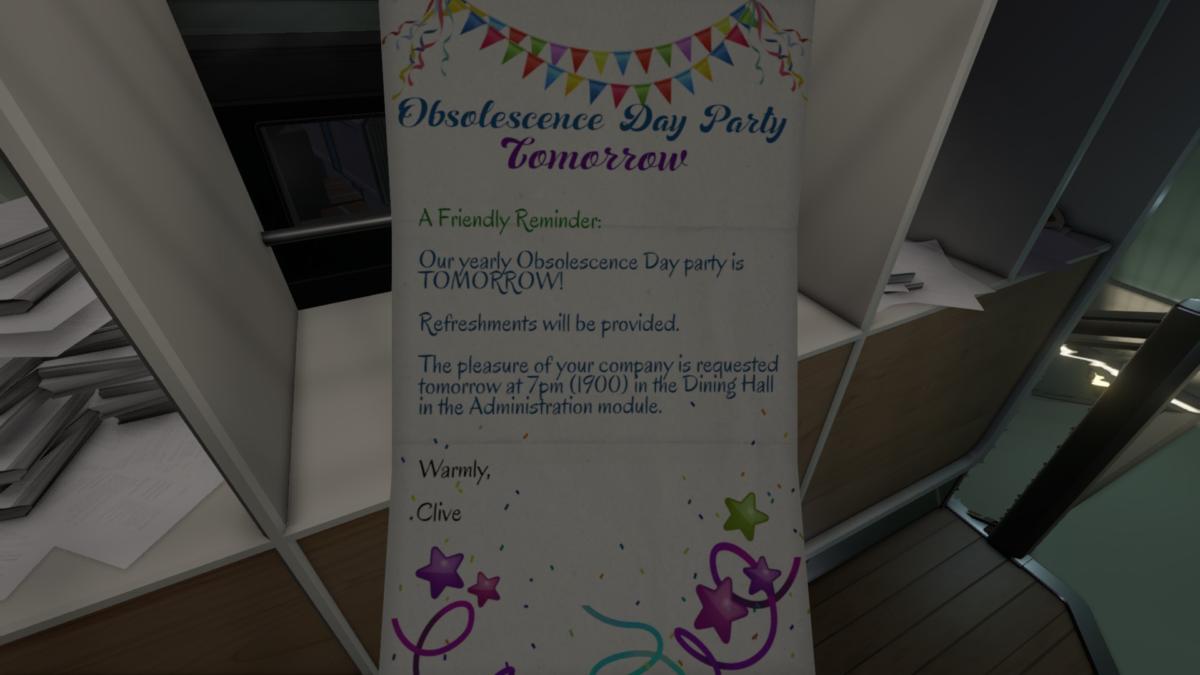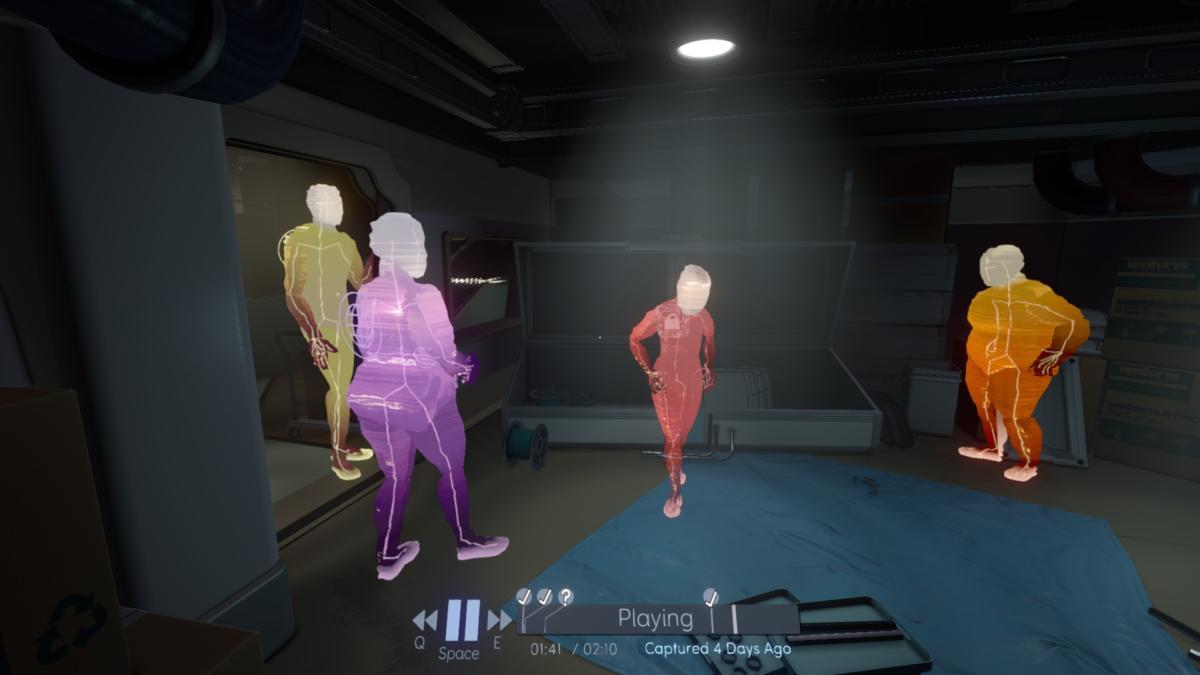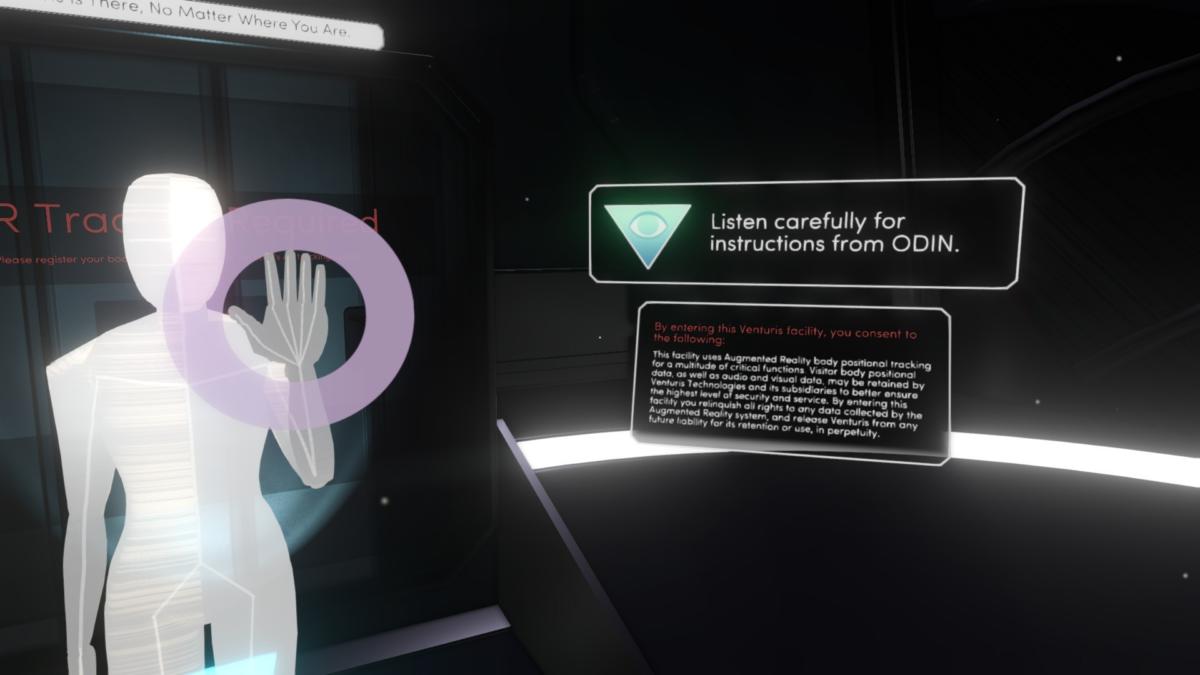
Show, don’t tell. It’s one of filmmaking’s oldest adages—write for the screen. Don’t drag out in dialogue what’s better served through action, left unsaid, sequestered away in subtext.
I bring it up because Fullbright’s first game, Gone Home, was a master of subtext. Arriving at your family’s empty house in the middle of the night, you’re left wandering room to room, piecing together a story from the objects you find scattered about. An invoice, a rejection letter from a publisher, a milk carton, a scribbled drawing, an old newspaper clipping—Gone Home worked in subtleties, a family dynamic reduced to its material possessions.
Tacoma? Not so much.
Ground control to Major Tom
Not for the last time, I’ll preface a largely critical review by saying “I enjoyed it.” I did. I enjoyed Tacoma.
I’m a sucker for space games, really. Especially ones that are well thought-out. Event[0], Prey, Tacoma—they all share a Kubrickian fetishization of detail, nods to both classic science fiction and hard science.

IDG / Hayden Dingman
In Tacoma this manifests, like Gone Home, in spectacularly detailed objects. The titular space station Tacoma is meant to be lived in, so how did the people there live? And the answer, it seems, is much like us. The future is shiny and chrome, but people still run on treadmills, litter their workspaces with Post-It notes, and leave food wrappers everywhere. It’s just that these food wrappers belong to calorie-packed meal replacement bars, not [Insert Popular 1990’s Candy Bar Here].
It’s a meticulously detailed depiction of the future. As I made my way through Tacoma, I often felt like I was exploring a digital Epcot, a glimpse of the hallowed “World of the Future” built for 2017. It’s not just that Tacoma is thorough—it’s also so mundane. It focuses on the small technologies, on the reality of humans living in space once “Being In Space” isn’t so exciting anymore.
But where objects were the be-all-end-all of Gone Home, Tacoma’s objects are incidental. They give the world weight, act as set-dressing, but they’re not the story. Few objects in any room can actually be picked up and examined, and even fewer factor into the bigger picture. You’re rarely making the same sort of archaeological inferences made in Gone Home.

IDG / Hayden Dingman
Instead, Tacoma tells its story through holograms. Like Gone Home, you arrive at Tacoma post-hoc.The crew is gone, the station abandoned.
The spirit of the crew remains, though. Every moment, every interaction aboard Tacoma has been recorded. Privacy concerns aside, it’s your lucky break—you’ll use these recordings to recreate the events on Tacoma, figure out what went wrong.
Some recordings inhabit a single room, others an entire common area, and they play back in 3D space—conversations, movements, it’s all recorded in these color-coded holograms, ready for you to watch, pause, and rewind at will.











